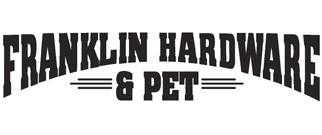Either a collar or a harness is essential to keep control of your dog and safely go for walks, but which is best for your dog? Understanding the pros and cons of each type of restraint can help you choose the option that will be safest, most comfortable and most effective for your canine companion.
Dog Collars
A collar is a single strap that fits loosely around a dog's neck. There are many sizes, styles and designs of collars, and they are generally very affordable and easy to find at pet stores, veterinary offices or in pet sections of any grocery store. But are they best for your dog?
Pros of collars include…
- Easier and more comfortable to wear at all times
- Keep tags and licenses close at hand with ease
- Simple and easy to use
Collar cons include…
- Can cause choking if the dog pulls or twists
- Easier for a dog to slip out of by wriggling or if frightened or panicked
- Puts pressure on the neck and may cause, eye, ear, throat or thyroid problems
- Less effective for strong training or control
Dog Harnesses
Harnesses fit around a dog's chest and torso, providing greater control and guidance to your pet. They are still available in different styles and sizes, as well as both back and front attachment types, but there is not quite as much stylistic variety as with collars. Depending on the manufacturer and features of the harness, they can be more costly as well. But are those dollars well spent?
Harness pros include…
- Better for dogs that pull or lunge
- Less risk of choking because there is no neck pressure with a properly fitted harness
- Not as easy for dogs to escape if the harness fits well
There are cons to harnesses, such as…
- Can be more difficult to find appropriate sizes for some dog breeds
- Disrupts the dog's coat more and is less comfortable for continuous wear
- Not as easy to attach licenses and tags in a comfortable way
- Can be harder to put on a dog that wriggles or resists
Doubling Up – Use Both
Many dog owners find it is best to use both a collar and a harness for their pet. A collar can be worn at all times to keep the dog's license, identification and tag information easily accessible, and collars are suitable for short, familiar walks or indoor training sessions. A harness, on the other hand, is often best for longer walks or when visiting new areas where the dog may get friskier and more excited.
Ultimately, there is no one-size-fits-all for every dog when deciding between collars and harnesses. Consult with your veterinarian about your dog's needs and any health concerns about wearing either a collar or harness, and consider giving both a try in different ways to see which one you and your pet prefer. Once you have examined both collars and harnesses, you'll be able to decide which is best for your dog.






Comments